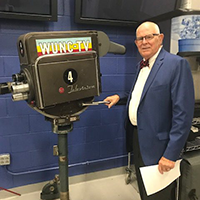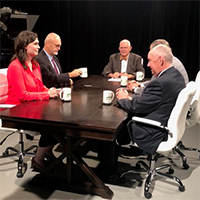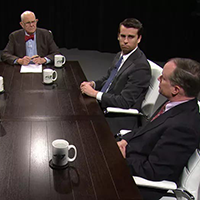While opinions differ on North Carolina’s certificate of need (CON) laws, I wanted to share a personal story that may resonate with others seeking affordable healthcare — and coming up short.
About a year ago, my son needed a shoulder MRI. As I began shopping around, I was dismayed by the high prices I found locally. The sticker shock inflated to the $5,000+ range for this simple image at a few facilities. Albeit lower in cost, even the independent radiology practices were still too expensive. Then I recalled that in 2023, the South Carolina legislature unanimously repealed its certificate of need law — a bold move to open up health care competition.
I thought to myself, “Why am I not looking for this MRI just over the border in South Carolina? Surely, the CON repeal has had time to drive prices down there.” Turns out my instincts were right. I found an MRI of the shoulder without contrast at a lovely, independent orthopedic practice in Fort Mill, South Carolina, for $330 cash.
I didn’t need to haggle with insurance or struggle through the prior-authorization process. I just texted my direct primary care doctor, and he sent the order. I paid online, and my son and I made our way to Fort Mill on a cool, spring morning last year. It was a short 90-minute drive, and we made the most of it, turning it into a fun mother-son outing.
When we checked in, the excellent staff took great care of my son. I walked back to the area where they’d purchased a new open MRI machine and watched them tuck my son under a comfy blanket so he could relax during the procedure. When I returned to the waiting area, I fixed myself a cup of coffee and settled in for about 30 minutes. Before I knew it, his image was complete, and they made a digital copy of the image to take with us. Because I’d paid the $330 ahead of time, we were all set!
Next, we enjoyed a nice lunch and did some shopping. I know our modest spending in Fort Mill that day didn’t make headlines, but those dollars could have stayed in North Carolina if the price had been right. I think the grand total we spent just over the North Carolina border was approximately $700 that day — a sum I would have gladly paid in my home state if that were possible. The lowest price for just the MRI (excluding lunch or retail therapy) was between two and five times what I spent on everything we consumed in South Carolina that day.
I know I’m just one person, and North Carolina didn’t miss that money. But, what if 10,000 other North Carolinians follow my lead and vote with their feet, taking their dollars south of the border? Fort Mill is about a stone’s throw from Charlotte, one of our state’s most populous cities.
Atrium Health and Novant have some of the highest prices in the nation. What happens when word gets out that our southern neighbors have allowed competition to do what it does best — reduce costs? When you’re paying cash, the laws of supply and demand still apply — and they work.
Members of the North Carolina General Assembly should be listening to their constituents, who can vote for them (or not). I know the allure of listening to lobbyists from the state hospital groups must be strong, but the needs of your voters in your home district should be a higher priority. Your constituents need to save money on health care. High health care costs are burdensome to state citizens, and too many local hospitals are doing financial harm to their communities.
We need better choices, and opening the marketplace up to new entities that will compete for our business will lower overall costs and yield happier citizens. Furthermore, North Carolina’s employers who offer health plans to their workforce need more choice too. They have a legal requirement to apply a fiduciary standard of care when overseeing how those health plan dollars are spent. More choice will help our state’s job creators also comply with the fiduciary standards that are impossible to achieve in today’s health care economy in the great state of North Carolina.
As Einstein once said, “We cannot solve our problems with the same thinking we used when we created them.” That’s sound advice — and it’s time to apply it to North Carolina’s health care economy.







